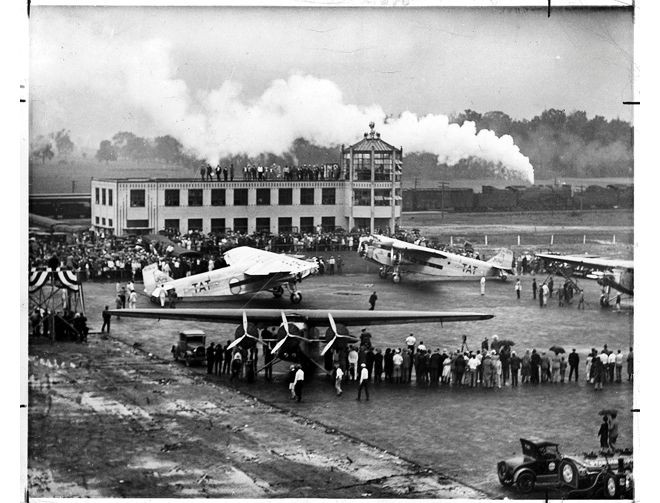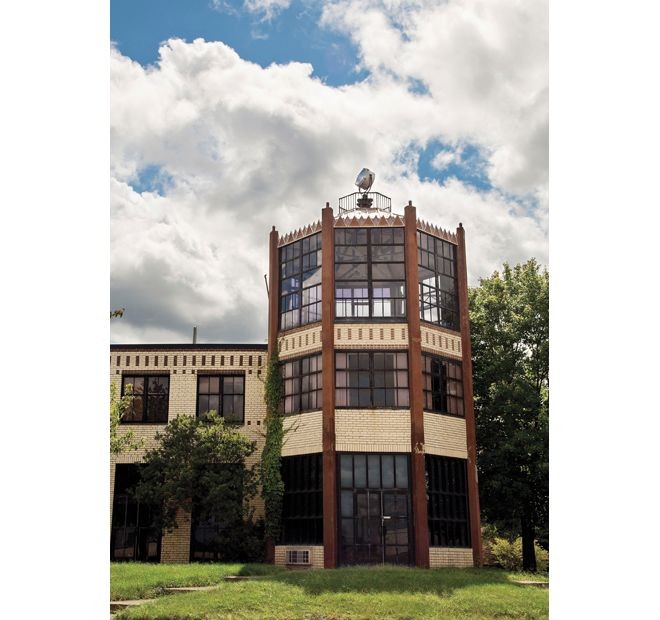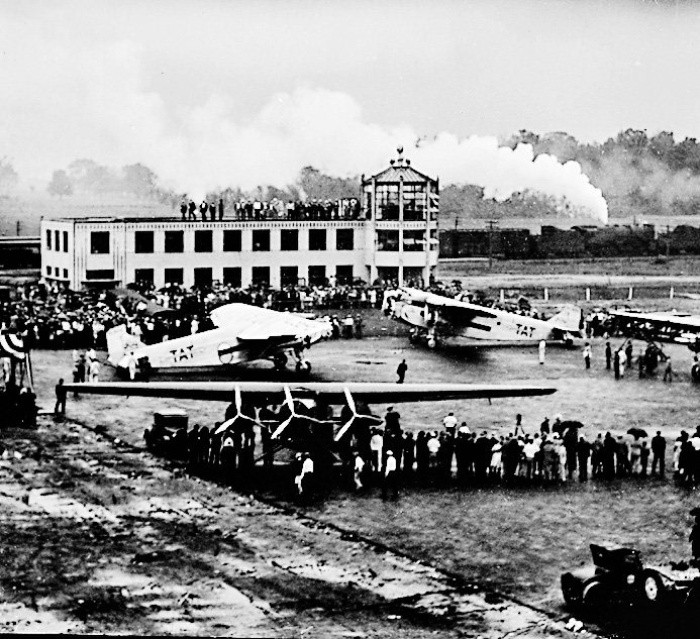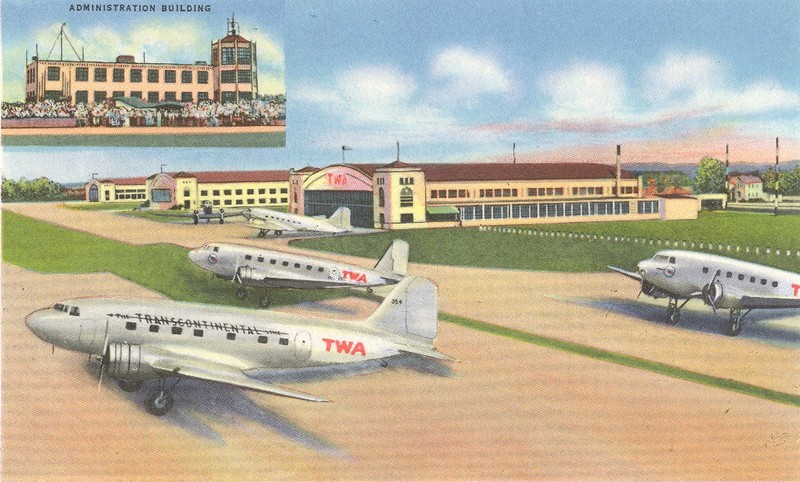Port Columbus Terminal, 1929-1958
Introduction
Text-to-speech Audio
Images
Port Columbus terminal opened July 8, 1929

The Art Moderne-style building



Backstory and Context
Text-to-speech Audio
The first flights from the Port Columbus Terminal were two Ford Trimotors carrying nineteen passengers, including Amelia Earhart, westward on July 8, 1929. The terminal was designed by the Allied Architects Association, and its location was chosen by Charles Lindbergh himself. The inaugural flights were a part of the Transcontinental Air Transport line, also known as the “Lindbergh Line.” Travelers would come to Columbus by train, then fly to Oklahoma before boarding another train to take them to their final destination, such as Los Angeles. In 1930, the TAT merged with Western Air Express and eventually became World Airlines.
When the Great Depression hit shortly after its grand opening, the Port Columbus Terminal began to lose money. The merger with Western Air Express helped turn things around, as did the arrival of mail service in 1930, and a contract with the Curtiss-Wright Corporation in 1940. By 1940, about fifteen flights landed at and left the airport each day. During World War II, the U.S. government took over the airport and established a Naval Air Facility there, which meant adding new buildings and lengthening the runways to 8,000 feet. The Port Columbus Terminal remained in use until a new terminal opened on September 21, 1958.
The Art Moderne-style building on
the Port Columbus Terminal site has been abandoned since 2008. Because of
preservation efforts, though, it was saved from demolition. In 2015, the
Heartland Bank made a move to restore the building and use it for office space.
However, due to the technicalities involved with purchasing historic properties
and airports, the plans fell through.
Sources
Rose, Marie Matzer. Plans building to preserve original Port Columbus air terminal. The Columbus Dispatch. February 25, 2018. Accessed September 14, 2018. http://www.dispatch.com/news/20180225/plans-building-to-preserve-original-port-columbus-air-terminal.
Port Columbus International Airport (CMH). Airports Guides. Accessed September 14, 2018. http://www.columbus-cmh.airports-guides.com/cmh_history.html.
Port Columbus Airport Original Terminal Turns 85. 10 TV. July 09, 2014. Accessed September 14, 2018. https://www.10tv.com/article/port-columbus-airport-original-terminal-turns-85.
Fischer, Jr., William. Original Port Columbus Airport Terminal 1929-1958. Historical Marker Database. October 20, 2008. Accessed September 14, 2018. https://www.hmdb.org/marker.asp?marker=12731.
